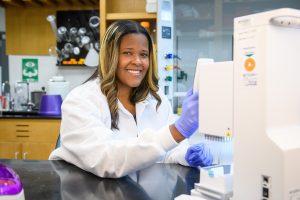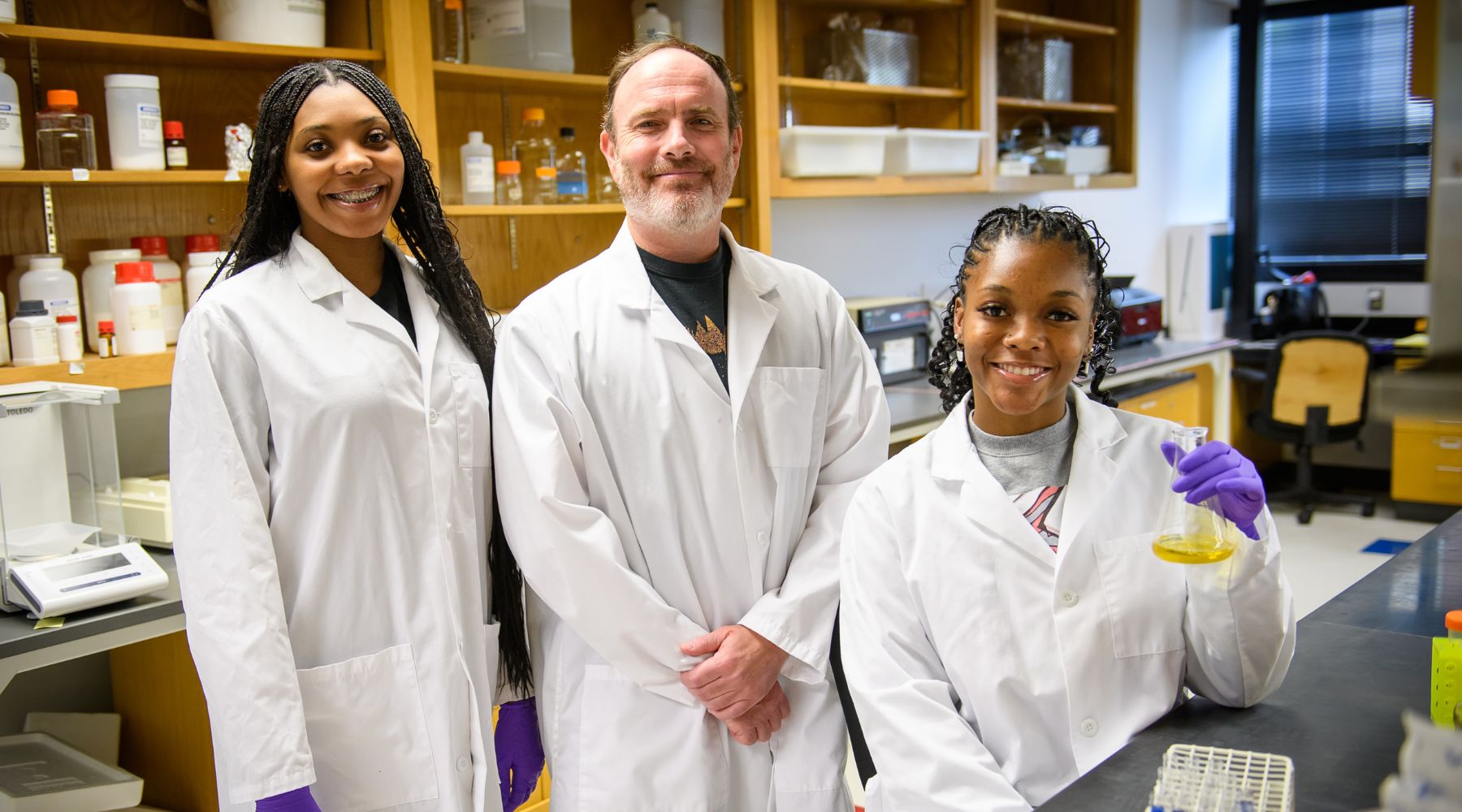As college freshmen, J’Taelii Heath and Amia Quinn entered their Oklahoma Medical Research Foundation internship about like you’d expect: excited about science but with relatively little understanding of it.
Flash-forward three summers, and the incoming seniors are old pros at lab experiments. They left OMRF in late July having “aged out” of the foundation’s Langston Scholars Program, which seeks to diversify biomedical research in Oklahoma. The partnership includes OMRF, Langston University and the Oklahoma City Veterans Affairs Medical Center.
“It’s been cool to watch these light-bulb moments go off in their heads as they discover more and more about the disease they’re studying,” said OMRF scientist Bob Axtell, Ph.D., who has mentored Heath and Quinn the past three summers. His lab studies multiple sclerosis, an autoimmune disease that affects nearly 1 million Americans.
Each summer, Heath examined the correlation between MS and smoking. She has presented her research at scientific conferences around the country and last year took first place in a poster presentation during Research Day at the Oklahoma State Capitol.
“I’ve learned that one thing can have a cluster effect on the body,” Heath said. “As a result, each time you do an experiment, new questions come up.”
Quinn hopes to become a forensic pathologist – a medical doctor who provides answers to loved ones following an unexplained death. Her internship experience added fuel to that ambition.
Axtell’s lab is above the entrance to OMRF’s MS Center of Excellence. “On the way to the lab, I would see people struggling to walk even a hundred steps to the clinic,” Quinn said. “It was rewarding to know that I might contribute toward developing new therapies for them.”

OMRF scientist Valerie Lewis, Ph.D., who’s also a former Langston staff member, initiated the internship program in 2021. After that first summer, OMRF was among 20 sites nationwide funded by VA through a three-year pilot project aimed at diversifying VA’s scientific workforce.
“Hal and I like to joke that we created the blueprint for VA,” Lewis said of her supervisor, OMRF physician-scientist Hal Scofield, who is associate chief of staff for research at the OKC VA Medical Center.
In July, VA approved five more years of funding, plus a 50% increase, to $120,000 per year.
“This OMRF program has offered high-quality research experiences to its scholars,” said Carol Fowler, Ph.D., a program officer with the VA Office of Research and Development. “We’re thrilled with the progress.”
The program’s multi-year nature is what most pleases Byron Quinn, Ph.D., who chairs Langston’s biology department. “The ability to return to the same lab each summer allows students to accomplish more,” he said. “J’Taelii and Amia are proof of that.”
Lewis hopes VA’s recent grant extension might allow a Langston graduate to continue interning at OMRF while completing doctoral research.
“That’s my ultimate goal,” she said. “For some of these students to begin their early careers as scientists at OMRF or VA.”
Interns receive $5,000 for the eight-week program. Applications for next year’s program are due in early February. To learn more about the program, visit omrf.org/Langston.



